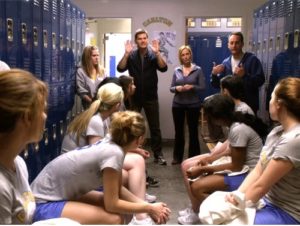Not all readers are leaders, but all leaders are readers. ~Harry Truman
 I read two things this week that caused me to pause and reconsider how I prioritize my time. The first was the introduction to a book I just started entitled How to Have a Good Day by Caroline Webb. Her writing combines three behavioral sciences: neuroscience, psychology, and behavioral economics. But what stood out to me was her statement that she has read over 600 books on these topics to provide the foundation for her writing. Secondly, a friend posted a link to a recent blog post by best-selling author, Philip Yancey, where he confesses his personal crisis: a loss of “deep reading” while surrounded by his own library of more than 5,000 books.
I read two things this week that caused me to pause and reconsider how I prioritize my time. The first was the introduction to a book I just started entitled How to Have a Good Day by Caroline Webb. Her writing combines three behavioral sciences: neuroscience, psychology, and behavioral economics. But what stood out to me was her statement that she has read over 600 books on these topics to provide the foundation for her writing. Secondly, a friend posted a link to a recent blog post by best-selling author, Philip Yancey, where he confesses his personal crisis: a loss of “deep reading” while surrounded by his own library of more than 5,000 books.
I enjoy reading, but every now and then, I benefit from a reminder of the leaders who continually commit a significant portion of time to reading. Or as Charles Chu suggests below, they create a fortress around their priority for reading.
I recognize that the portion of Yancey’s post that I’m about to quote goes beyond what would be considered appropriate by APA or Chicago Style standards. So I’ll also highlight the link to his full post if you’re up for some “deep reading” of your own: http://philipyancey.com/reading-wars.
YANCEY: Neuroscientists have an explanation for this phenomenon [short bursts of reading on the Internet]. When we learn something quick and new, we get a dopamine rush; functional-MRI brain scans show the brain’s pleasure centers lighting up. In a famous experiment, rats keep pressing a lever to get that dopamine rush, choosing it over food or sex. In humans, emails also satisfy that pleasure center, as do Twitter and Instagram and Snapchat.
An article in Business Insider studied such pioneers as Elon Musk, Oprah Winfrey, Bill Gates, Warren Buffett, and Mark Zuckerberg. Most of them have in common a practice the author calls the “5-hour rule”: they set aside at least an hour a day (or five hours a week) for deliberate learning. For example:
Bill Gates reads 50 books a year.
Mark Zuckerberg reads at least one book every two weeks.
Elon Musk grew up reading two books a day.
Mark Cuban reads for more than three hours every day.
Arthur Blank, a cofounder of Home Depot, reads two hours a day.
In the last two years, Charles Chu has read more than 400 books cover to cover. Willpower alone is not enough, he says. We need to construct what he calls “a fortress of habits.” I like that image. Recently I checked author Annie Dillard’s website, in which she states, “I can no longer travel, can’t meet with strangers, can’t sign books but will sign labels with SASE, can’t write by request, and can’t answer letters. I’ve got to read and concentrate. Why? Beats me.” Now that’s a fortress.
In a blog post by Chu, he says, “In the time you spend on social media each year, you could read 200 books.” Reducing social media time could be a start to creating a “fortress of habit” around reading.
Because if you want to lead, read, read, read.



